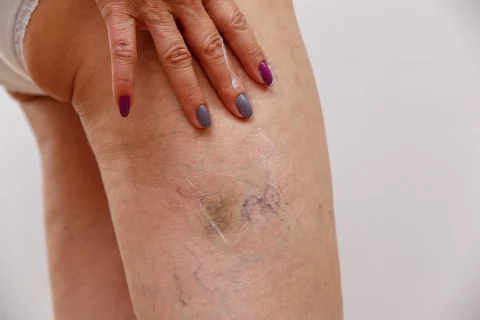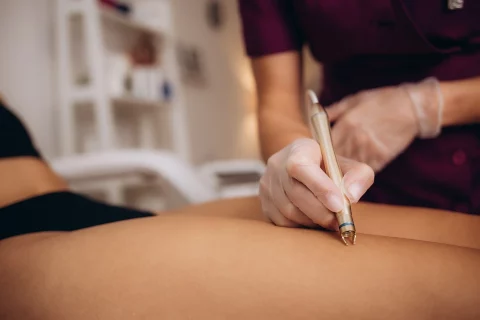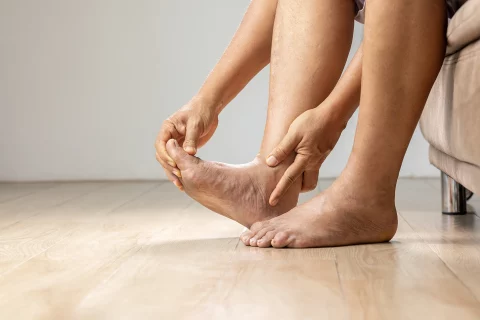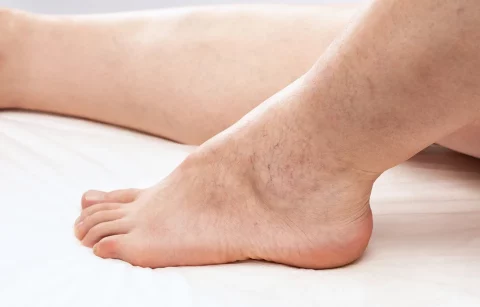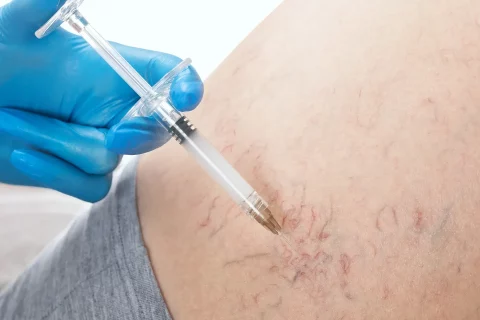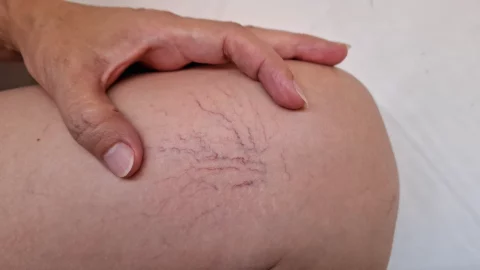Achieve flawless skin by uncovering the hidden causes and tailored treatments for spider veins on dark skin
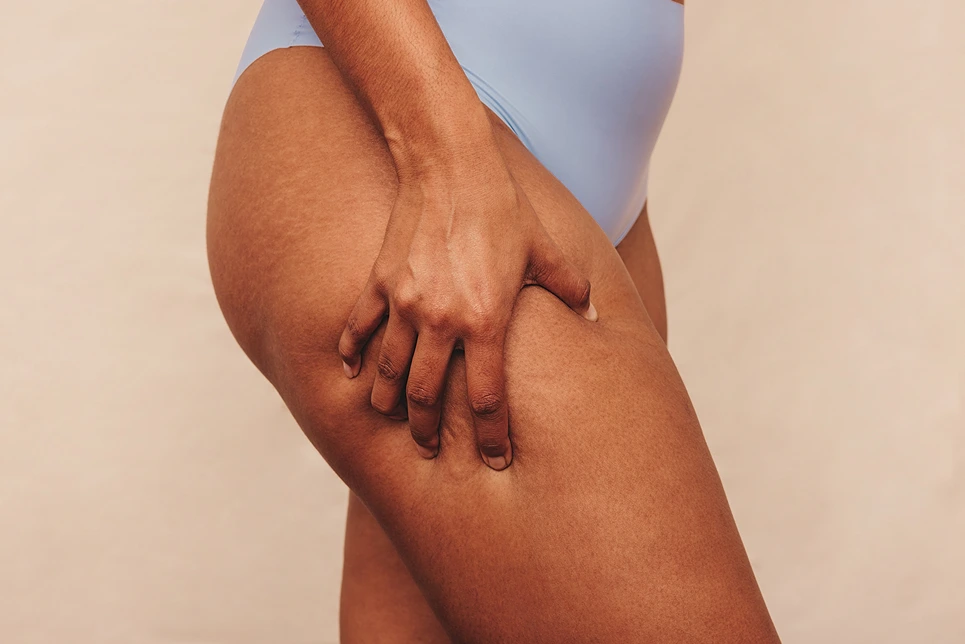
Spider veins on dark skin require special consideration. Unlike lighter skin tones, dark skin can make spider veins more noticeable due to the contrast between the vein color and skin tone.
This increased visibility can lead to greater self-consciousness and a stronger desire for treatment.
Understanding the causes of spider veins is crucial for effective treatment. Spider veins, also known as telangiectasia, are small, dilated blood vessels that appear as web-like patterns on the skin. They can be caused by a variety of factors, including genetics, hormonal changes, and sun exposure.
Dark skin is more prone to hyperpigmentation, which can further accentuate the appearance of spider veins.
Treatment options for spider veins on dark skin are available. Sclerotherapy, a common treatment for spider veins, involves injecting a solution into the affected vein to collapse it.
However, dark skin may require more precise treatment due to the risk of hyperpigmentation or keloid scarring. Other treatment options, such as laser therapy and compression stockings, can also be effective in reducing the appearance of spider veins.
It’s essential to consult a qualified healthcare professional to determine the best course of treatment for individual cases.
Spider Veins on Dark Skin Explained
- Spider veins on dark skin appear more pronounced due to increased melanin levels. This increased melanin affects the visibility of spider veins, making them more noticeable.
- Darker skin tones require special consideration for treatment. They may be more prone to hyperpigmentation or discoloration after spider vein treatments, leading to uneven skin tone.
- It’s essential to find a dermatologist experienced in treating spider veins on dark skin to ensure optimal results.
- A dermatologist with experience in treating dark skin tones can provide a tailored treatment plan. For example, laser therapy may require specialized equipment to avoid damaging surrounding skin.
By understanding how skin tone affects spider vein appearance and treatment, you can take the first step towards effective and safe treatment. This leads to reduced spider vein visibility and smoother, healthier-looking skin.
Causes and Risk Factors of Spider Veins
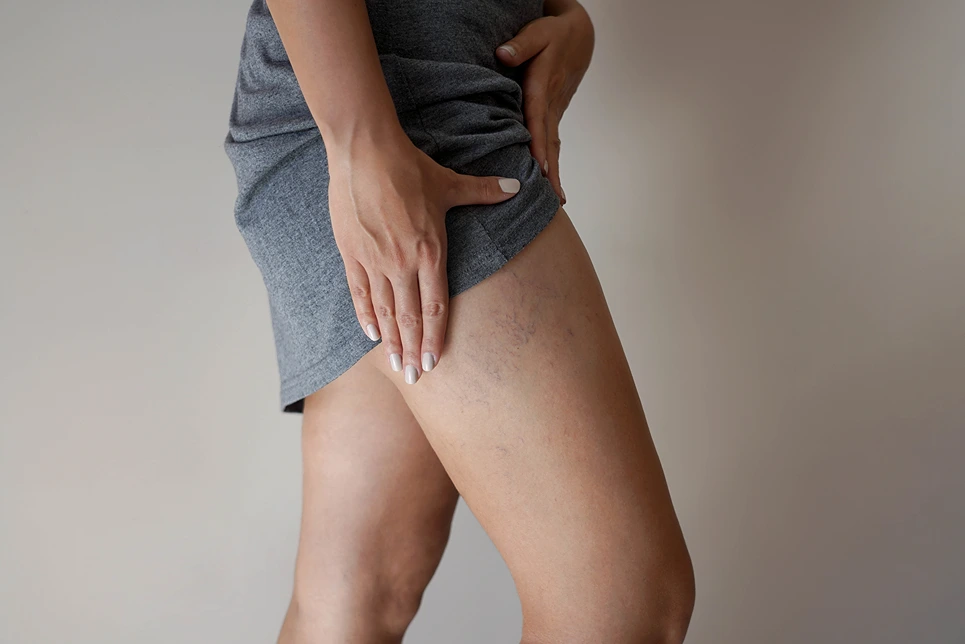
Spider veins on dark skin can be caused by a combination of genetic, hormonal, and environmental factors. Genetic predisposition plays a significant role, as certain medical conditions can increase the risk of developing spider veins.
For example, people with a family history of venous insufficiency or blood clotting disorders are more likely to develop spider veins.
Hormonal changes can also contribute to the formation of spider veins. During pregnancy or menopause, hormonal fluctuations can cause blood vessels to dilate, leading to spider veins.
Trauma to vessels, such as injuries or surgery, can also damage blood vessels and lead to spider veins.
Other risk factors for spider veins on dark skin include obesity, prolonged standing, and a family history of vein issues.
Darker skin tones can make spider veins more noticeable, but it’s essential to remember that spider veins aren’t just a cosmetic concern. They can cause discomfort, pain, and swelling.
Treatment Options for Dark Skin
- Treating spider veins on dark skin requires a thoughtful approach. This is because some therapies can be more effective than others for this specific skin tone.
- Laser therapy is a suitable option, as it can target affected blood vessels without damaging surrounding skin. Another option is sclerotherapy, but it’s crucial to work with a dermatologist who’s experience treating dark skin. This is because sclerotherapy requires special care to avoid hyperpigmentation or skin discoloration.
- Endovenous therapies like radiofrequency ablation can also be effective, but a consultation with a dermatologist is necessary for proper evaluation and management.
Regardless of the treatment chosen, it’s vital to follow post-treatment care instructions carefully, as dark skin tones are more prone to hyperpigmentation after vein treatments. A dermatologist will provide personalized recommendations to ensure optimal results.
Lifestyle Changes Can Help Prevent Spider Veins
Adopting specific lifestyle changes can reduce the risk of developing spider veins in individuals with dark skin. Regular exercise is essential, as it improves circulation and helps prevent spider veins. For instance, engaging in activities like walking, cycling, or swimming for at least 30 minutes a day can make a significant difference.
Elevating Legs Reduces Pressure on Veins
Another simple yet effective habit is to elevate your legs when sitting or lying down. This reduces pressure on your veins, preventing spider veins from forming. Try to elevate your legs above the level of your heart for 15-20 minutes, three to four times a day.
Maintaining a Healthy Weight
Maintaining a healthy weight is crucial for dark skin individuals. Excess weight puts additional strain on your veins, making them more susceptible to damage and spider veins. By managing your weight, you’ll reduce the pressure on your veins and lower your risk of developing spider veins.
Additional Preventive Measures
Wearing compression stockings can aid in promoting blood flow and preventing the formation of spider veins. Additionally, protecting your dark skin from sun exposure is essential, as UV rays can damage blood vessels and increase your risk of spider veins.
Consulting a Healthcare Professional
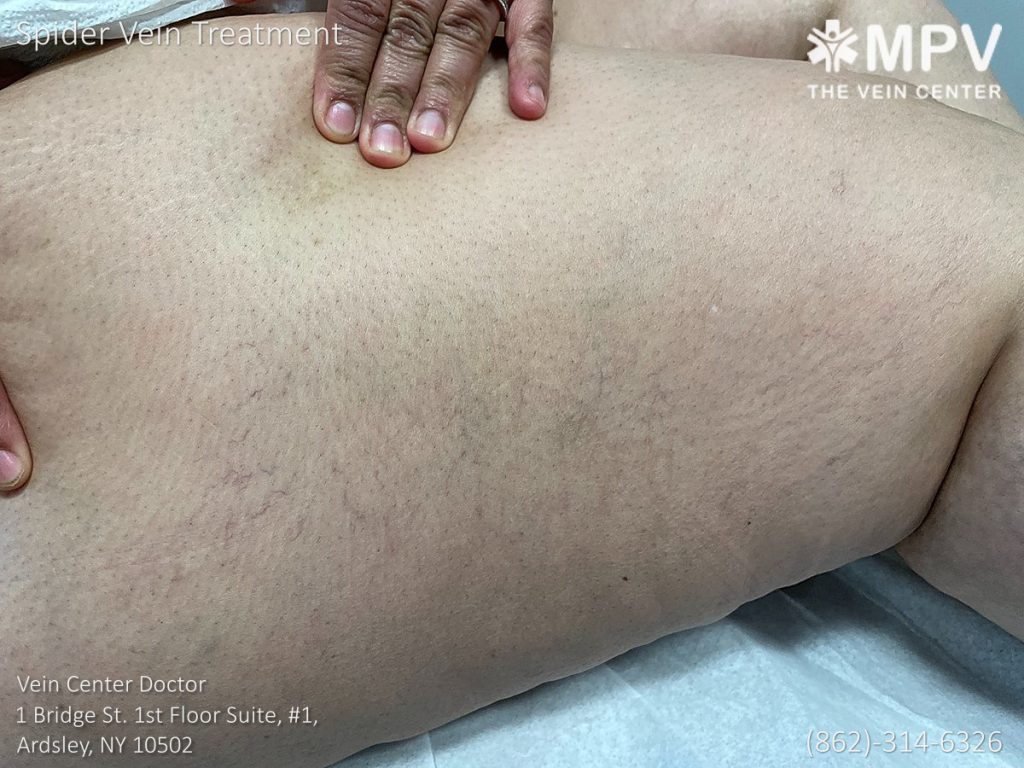
Consulting a healthcare professional is essential for assessing and treating spider veins on dark skin. This step allows for a personalized evaluation and diagnosis of the condition. A dermatologist or vascular surgeon will assess the severity of your spider veins and recommend appropriate treatment.
During the evaluation, they’ll examine your skin and ask about your symptoms, medical history, and lifestyle. They may also determine if underlying conditions, such as chronic venous insufficiency, are contributing to your spider veins.
Treatment recommendations will be tailored to your specific needs. The healthcare provider will analyze their findings and provide personalized care and the most effective treatment options for your spider veins on dark skin.
Regular follow-ups with your healthcare provider are crucial to monitor the progress of your treatment and address any concerns you may have. With their guidance, you can effectively manage your spider veins and achieve the best possible outcomes.
Lifestyle changes, such as regular exercise, maintaining a healthy weight, and avoiding prolonged standing or sitting, can help prevent spider veins.
Consulting a healthcare professional is essential in developing a personalized plan to manage and prevent spider veins.
Proper post-care is crucial to avoid complications like hyperpigmentation, which can be more challenging to treat on dark skin.
By adopting the right approach, you can reduce the appearance of spider veins and maintain healthy, beautiful skin.


